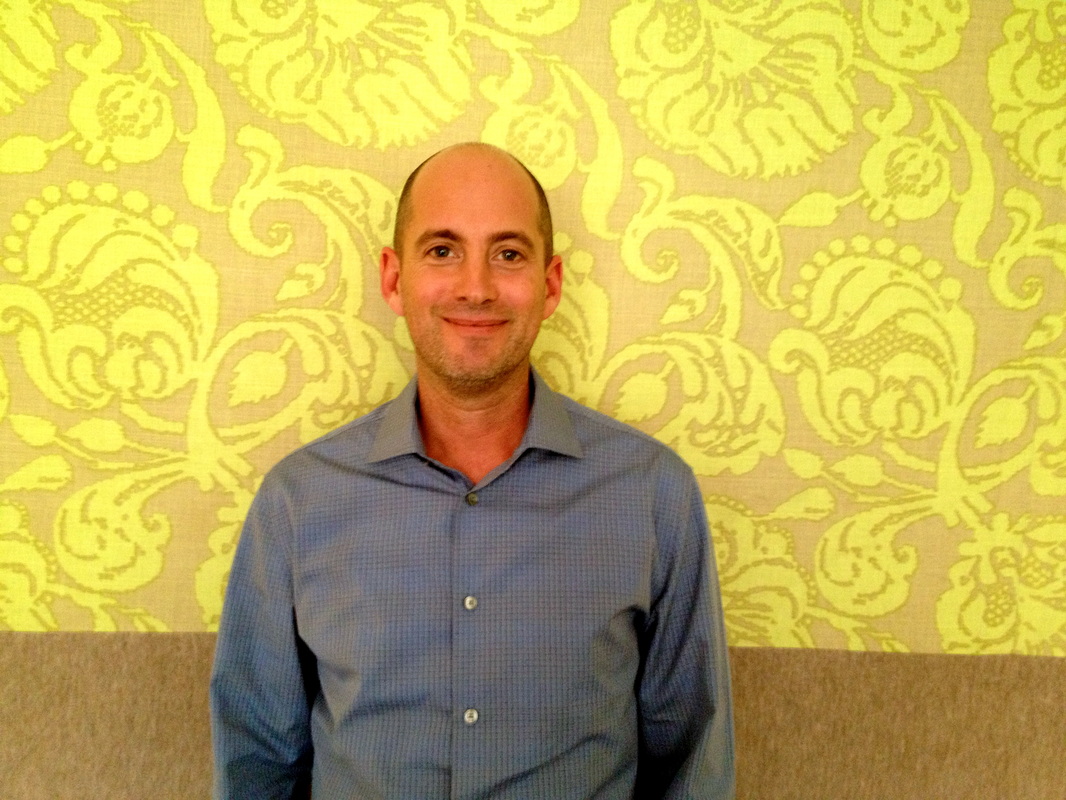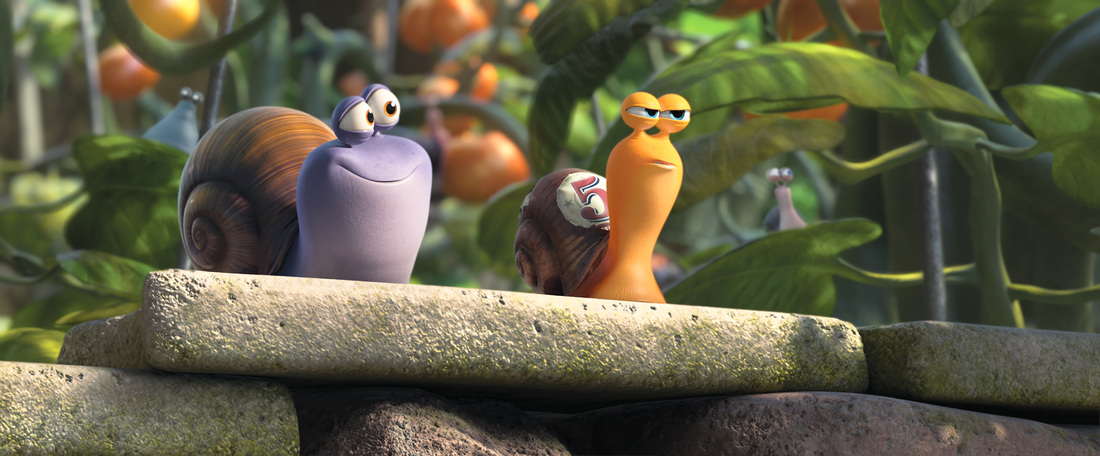INTERVIEW WITH DAVID SOREN
This article is an interview with David Soren, director of TURBO.
Roundtable conducted on 2nd July 2013
(Solely my questions typed up below.)
(Solely my questions typed up below.)
I interviewed director David Soren about his car race/super hero/snail mash-up, TURBO. Here, he talks about his eccentric high-speed animation…
I found the racing scenes particularly exhilarating.
Oh good.
I’m a big action cinema fan. Could you talk about how you created those please?
I wanted to treat the race authentically. It is the real Indy 500 we’re representing in the movie. So we did our homework. We went to the Indy 500 2011/2012. I brought a lot of members of my crew. We studied the place day and night, with crowds, without crowds, different vantage points. Indy Car gave us a huge amount of access there, let us go into the pit area, watch the race from there, and up in the V.I.P. suite, you know where Chett [Turbo’s older brother] ultimately is held hostage.
I found the racing scenes particularly exhilarating.
Oh good.
I’m a big action cinema fan. Could you talk about how you created those please?
I wanted to treat the race authentically. It is the real Indy 500 we’re representing in the movie. So we did our homework. We went to the Indy 500 2011/2012. I brought a lot of members of my crew. We studied the place day and night, with crowds, without crowds, different vantage points. Indy Car gave us a huge amount of access there, let us go into the pit area, watch the race from there, and up in the V.I.P. suite, you know where Chett [Turbo’s older brother] ultimately is held hostage.
To follow up on that, I once went to a talk with Vic Armstrong, the great stuntman, where he enlightened us about working on Temple of Doom, and how Lucas and Spielberg left nothing to chance; they would record rollercoasters, what made people excited, what didn’t. So how do you work out what will thrill and not thrill in an animation?
We just tried to gauge whether it is thrilling us. We’re the only gauge we have initially, while we’re making it, so it has to get us excited or it’s not going to translate beyond us. But in terms of the race within the movie, we treated it like its own mini-movie – we took several months on just that part, and storyboarded it in its entirety and worked it as a whole. When an action sequence doesn’t work, your eyes kind of glaze over, and at a certain point you check out. It’s a 200 lap race, it’s going to be long, so I didn’t want it to feel just like what Chett describes it at the beginning of the movie, as just a series of left turns. There was a real character arc leading through each movement of the race; and that was really the goal, to have each part of it to serve Turbo’s emotional journey, so it didn’t just fell like a wall of action for 20 minutes.
Turbo joins Dash Parr from THE INCREDIBLES, James Ray Steam from STEAMBOY and Lightening McQueen from CARS, as one of the fastest animated characters. Who do you think would win in a race between the four?
That’s a good question. I have got to go for my boy Turbo.
|
|
|
I noticed you have got quite a few small roles in the voice cast, including the ‘Can’t Tuck Snail’. Obviously very non-egotistical, but why didn’t you give yourself a bigger role?
The way these movies work, before we get any of the professional actors in to do their roles, we voice them amongst ourselves. There’s a smattering of people around the studio who are decent amateur actors, and subpar than that even [laughs], so that’s how we get it up on reels and test out the ideas. Some of the performances end up sticking. I was desperate to replace myself as much as possible, and got a number of roles replaced by other actors, which was very happy for me not to hear myself; and some just stuck.
For animation lovers, there are so many animations now coming out every year, big blockbuster feature films, which would imply a healthy industry. But what do you think are the best challenges for animated feature filmmaking at the moment?
Well, definitely the crowded market place makes it more challenging to have a window to recoup your costs and turn a profit; but as a creative, a director, all I can do is tell the best possible story that I possibly can. I think that what’s exciting about making movies now versus 15/20 years ago, is that audiences have developed an appetite for more sophisticated storytelling. There’s been a definite increase I think in the quality of the scripts and the stories that have been told, and the character development over the past 15 years. And the technology on top of that has now allowed us to do pretty much anything we want. So I’m happy to be doing it now from a creative standpoint.
The marketplace dictates whether something becomes a franchise. Hopefully TURBO does well at the box office, and if a sequel is green-lit, do you have an idea right now where you’d like to take the character in future instalments?
Yeah, I’ve got some ideas of where I’d go with it. For now, I was trying to treat this one so that it’d work in and of itself, and really be a satisfying single movie experience.
You worked on SHREK, SHARK TALE and OVER THE HEDGE, at the birth of big budget CGI animations. What did you learn from those projects that you brought to TURBO? I know that’s a big question.
Yeah, because they are all so different. Well, SHREK was interesting. SHREK was a movie that nobody at the studio really wanted to work on initially. There was SPIRIT: STALLION OF THE CIMARRON going at the same time. Basically people were on either one or the other. Everyone wanted to work on the horse movie instead of the ogre movie. I actually liked the idea of the ogre movie, so I was happy to be part of that. And I got on it fairly late, roughly two-thirds of the way through; and it was interesting because it was really the storyboard artists on that movie that ended up cracking it. And I was lucky enough to be kind of on it when that happened. I certainly don’t attribute myself to that uncorking of it, but that was like a part of a series of sequences that ultimately kind of lead to the tone and the fun of that movie. So that started to create a momentum where there was a bit of de-emphasis on script and a little more of an emphasis on storyboarding through the problems; which worked on some movies, and I found didn’t work on other movies. Then ultimately when I got my shot to direct, I was kind of back full circle to wanting a strong script again. Not because I don’t appreciate what storyboard artists do, because I was one, I still feel like I am one, I just think there’s a reason historically why movies have scripts: They are the blueprint of the movie. So that was something I saw over the course of those movies, be exciting at first, and then ultimately kind of problematic at times. Does that give you an answer?
Yeah, great. With SHARK TALE that film was almost overwhelmed by the voice actors – Angelina, Will Smith, Renée. You have an equally talented and famous cast, how did you take elements of their personalities/personas, but draw a line in the sand?
I never wanted any of the actors to eclipse the characters they were playing. And that largely comes from the choice of which actors you choose, as well as the guidances and performances. We made a wish list and picked the actors we felt would be the most ideal for each part, and would compliment each other, and contrast each other and just have the best voices, you know, because that’s all you’re left with at the end of the day. So that was really it. What I love about the performances is that I don’t feel distracted by the celebrities behind them. Ryan disappears and becomes Turbo, and even Sam Jackson; you’re aware it’s Sam Jackson, but also Whiplash is a strong enough personality in and of himself that I think you go along and get sucked in. There’s a reason we hire big name actors, because they are great actors.
|
|
|
Am always intrigued when animated films choose to have animals or objects to be cognitive and the ability to speak, and then choose to either be a hermetic world, or choose to interact with humans. TURBO is probably one of the films that interact most equally between the animal world, and the human world. Did you ever consider keeping it purely in the animal world? At what point did you jettison the idea of doing that?
I never really wanted to keep it purely in the animal world. For me, this is a movie about dreamers and about realists; and I felt that was the more universal story to be told than a story of a snail, you know, purely a snail. I wanted audiences to be able to relate and have empathy for this journey. Anyone, young or old, there are dreamers equally among all members of the audience, whether there are dreams fulfilled or dreams unfulfilled. That was how I started to come across this duel brother story. I’ve got a brother; we get along though [laughs]. It just felt like to me the movie was able to paint on a bigger canvas by telling an animal and a human story.
I was really fascinated by the fact that one of your writers wrote THE WRESTLER, which is a phenomenal work. I was wondering how you got to work with him, and how you collaborated together?
We were looking to add another layer of sophistication to the storytelling, and the characters, and deepening the relationship between our two sets of brothers primarily. And we interviewed a bunch of writers. I was getting really busy, my workload was getting swamped, although, I kept writing all the way through. And Rob’s name [Robert D. Siegel] came up. We met with him, and we all just really connected. Rob’s also been the editor on The Onion for a long time too. And he wrote and directed BIG FAN. He’s very versatile as a writer. He understands what we were going for, and I loved that he was coming at it from a different approach, which was outside the system. It was great to be able to bounce ideas off of him.












